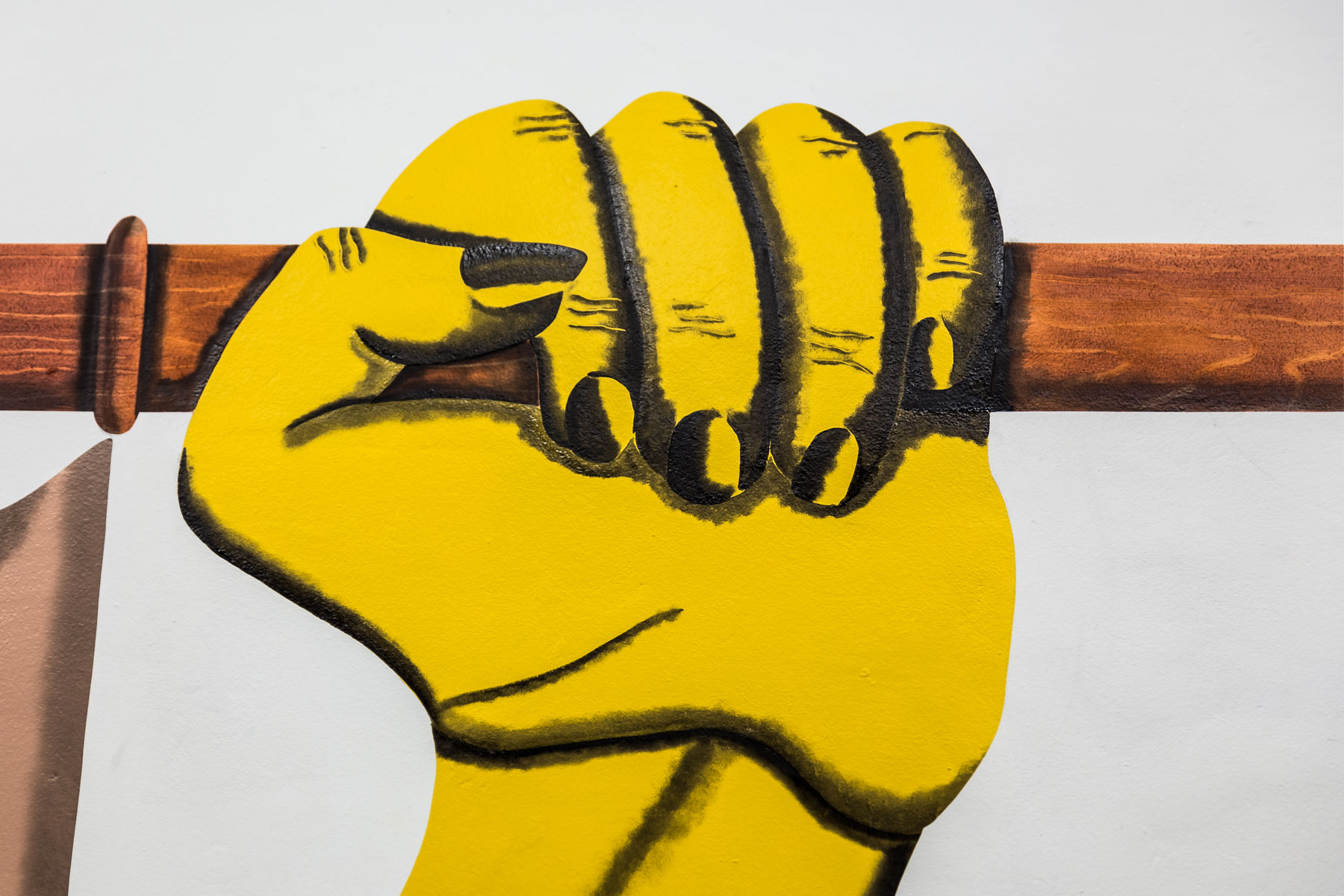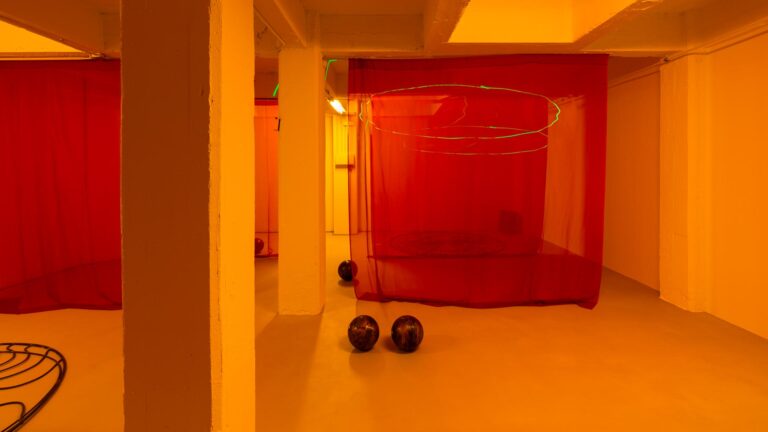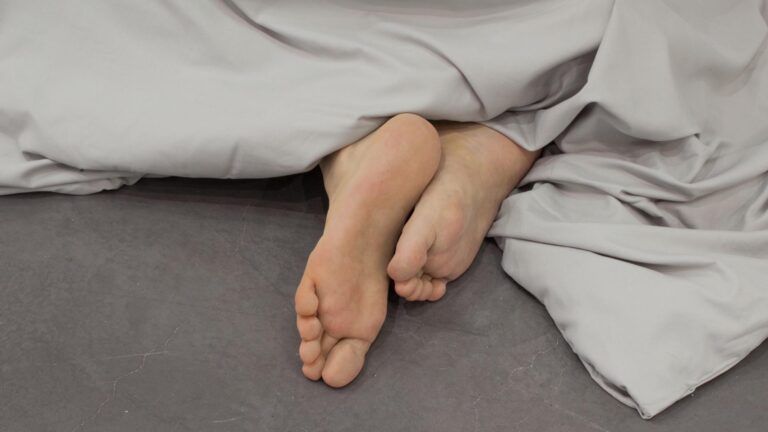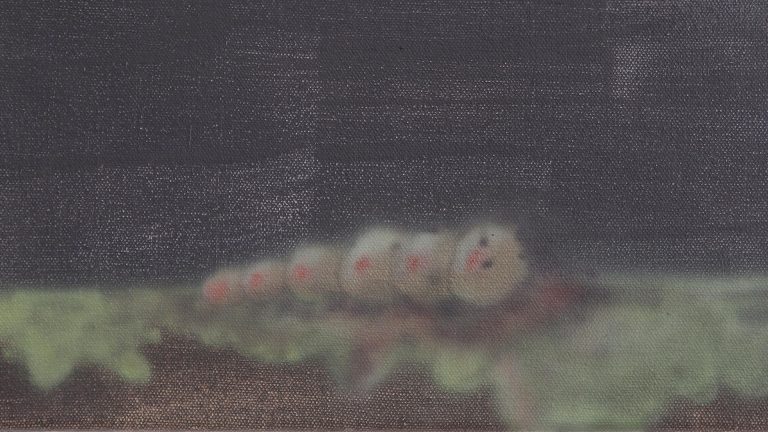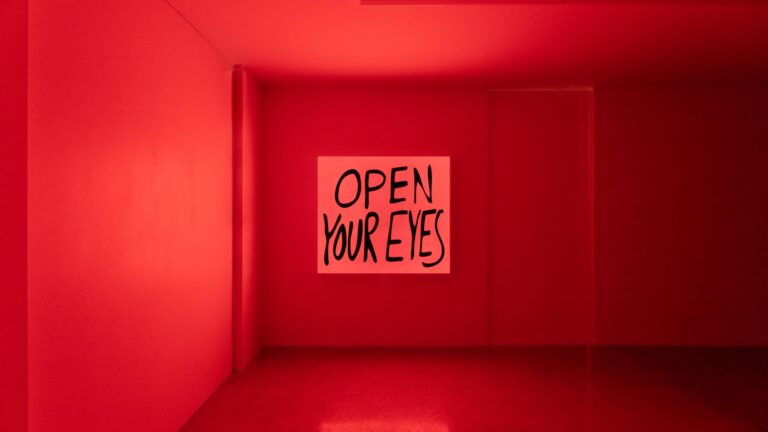Artist: Sarah Margnetti
Exhibition title: Flowers don´t pick themselves
Curated by: Elise Lammer
Venue: Bombon projects, Barcelona, Spain
Date: November 15 – December 22, 2018
Photography: all images copyright and courtesy of the artist and Bombon projects, Barcelona
For her first solo exhibition in Spain, Sarah Margnetti presents a series of new paintings as well as two site-specific wall painting, putting together an elusive narrative that explores the fragmentation of the female body and the sensorial and cultural potential of certain materials.
Resting on its palms and seen from above, the yellow hand of Introspection (2018) sports impressively long and curly nails. When I saw the painting, I immediately thought of Florence Griffith Joyner, the African American track and field world champion, whom I saw on TV in the 1980s breaking every speed record, while wearing the most fashionable outfits. Considered as one of the fastest runners of all time, she was also notorious for her incredibly long and colourful nails. A symbol of Black feminity, she challenged conventional gender and racial norms, in a field dominated by patriarchy and racism. In every sense, she incarnated a model of feminine freedom to my five-year-old self. Introspection is also a portrait of Margnetti’s own left hand and suggests the power of self-examination. It bears a strong affinity with Autocoscienza (2018), the only other painting on display in the exhibition. Depicted from a similar perspective, this works portrays the hands of 15 fellow artists, thinkers and curators—all female—with whom Margnetti shares an awareness of feminist struggle and inequalities in general. The long nails are intertwined, and woven together like the thread of a tapestry, symbolising the power of communal thinking and the possibility to raise consciousness and safety through mutual support.
Curtains are recurrent motives in Sarah Margnetti’s work, and important protagonists of the exhibition. In reference to theatre, where curtains are usually placed between the stage and the audience, Margnetti’s curtains indicate a separation between the viewers, and the large-scale bodies in the background. In her work, the artist often represents the human body in disconnected parts, either while out-of-scale, concealed behind curtains, or other architectural elements, or simply in schematic, often yellow, monochromatic cut-outs.
The curtains in Cortinas Parrahsius (2018) hang from a wooden tubular rod, held at each extremity by the hands of a large human figure. She holds it horizontally at shoulder level, in a motion similar to weightlifting. Her determined posture, with her clenched fists, manifests a sense of resistance, but also empowerment. Functioning both as a protective and suggestive tool, the curtains suggest that feminity and feminism are not mutually exclusive. In art and literature, the symbolic power of curtains is so diverse and loaded that they have been acted as early as the 4th century BC. In a tale about illusion and perception, the two Ancient Greek painters Parrahsius and Zeuxis were competing to determine which of the two could paint the most life-like. The former won the battle, when the latter attempted to draw the curtain painted by his competitor, proving that his perception had been tricked by the hyperrealism of the painting. However, curtains, even when lifted or gathered on each side of a stage or a tableau, are never meant to fully disappear. Their mere existence reminds us that they are the discreet warrants of illusion and transition. Unlike Parrhasius, Margnetti’s painted drapery are not meant to fully trick the human eye, but are represented for their metaphorical power.
Not without humour, a female breast hides among the curtain lapels of Rideaux Bonne-Femme (2018) and strikes one as a reference to Prière de Toucher (1947), a painting designed by Marcel Duchamp for the cover of Le Surréalisme en 1947, the catalogue that accompanied the first surrealista exhibition in Europe, which took place in Paris. It depicts a single female breast topped with a dark pink nipple emerging out of splash of black paint. The title (Please Touch) is revealing of the notable misogyny of an art movement who had a tendency to present women as being mere objects of lust and desire. Margnetti’s schematic bare breast is monumental, strategically overlooking the entire exhibition, and stands as an act of feminist defiance. The curtains intervene between us viewers, and a body, whose presence and identity are only guessed by means of an inviting yet shy hand. It’s another of Margnetti’s hands, this time pointing a finger, perhaps attempting to distract the viewer’s gaze, or hinting at an alternative way to look at the composition.
Receiving her BA from ECAL in Lausanne and her MA from HEAD in Geneva, Sarah Margnetti (1983 in Monthey, lives and works in Brussels and Lausanne) went on to get a technical training at The Van der Kelen-Logelain Institute in Brussels, one of the first schools dedicated to the study of decorative painting. Founded in 1882, it’s also one of the few places where art education is not about free expression, but about learning one strict, ancient discipline. Mastering the technique of trompe l’oeil, Margnetti has developed a virtuous painting style that combines optical illusions and abstract motives.







